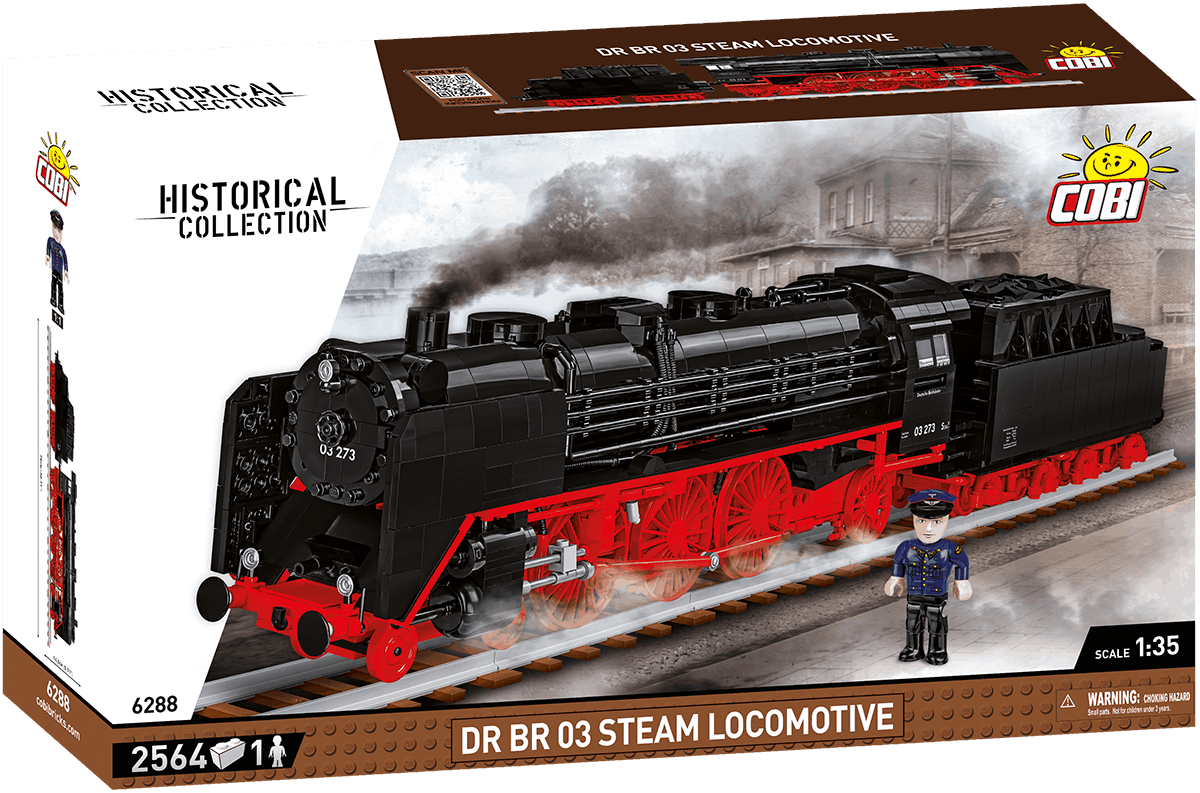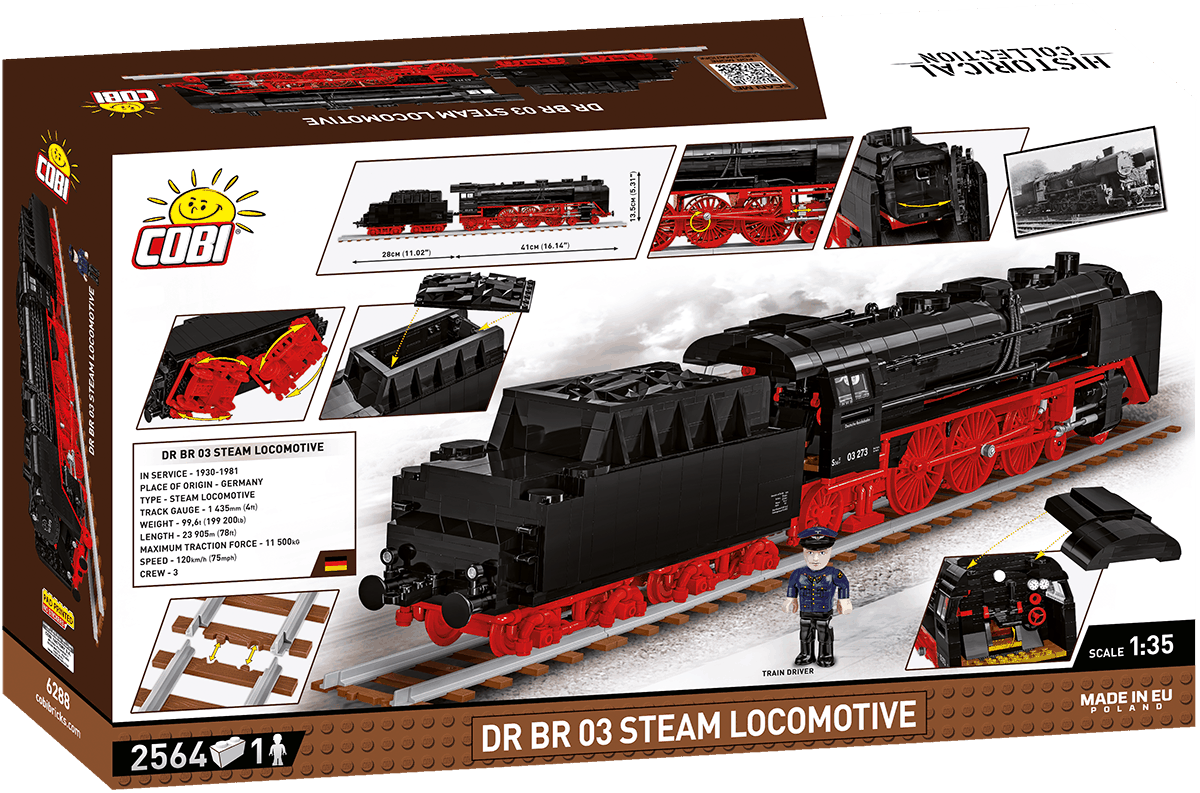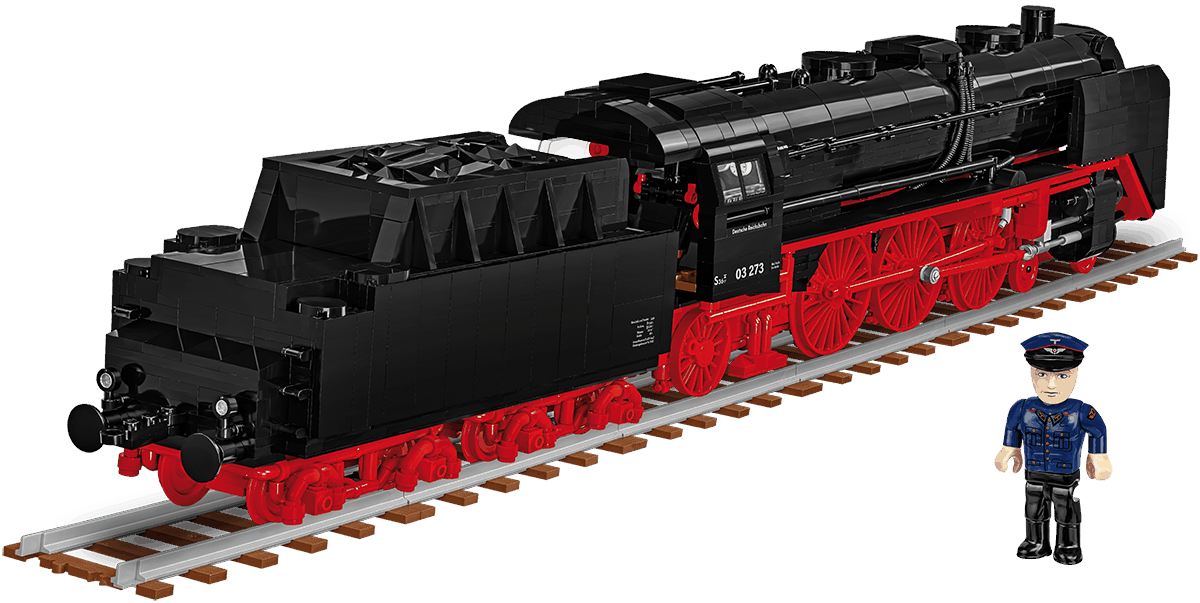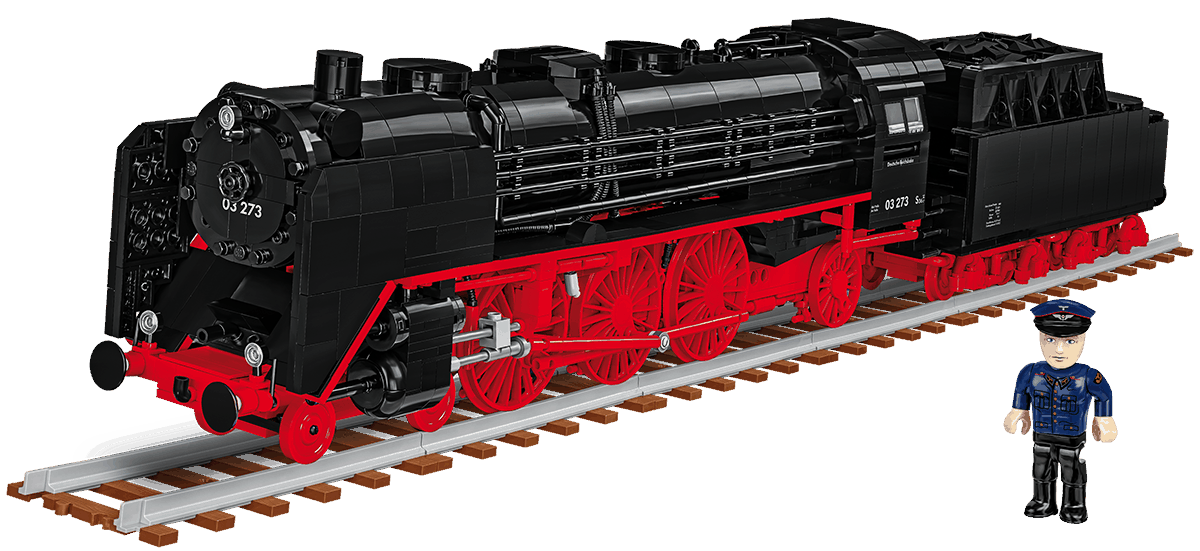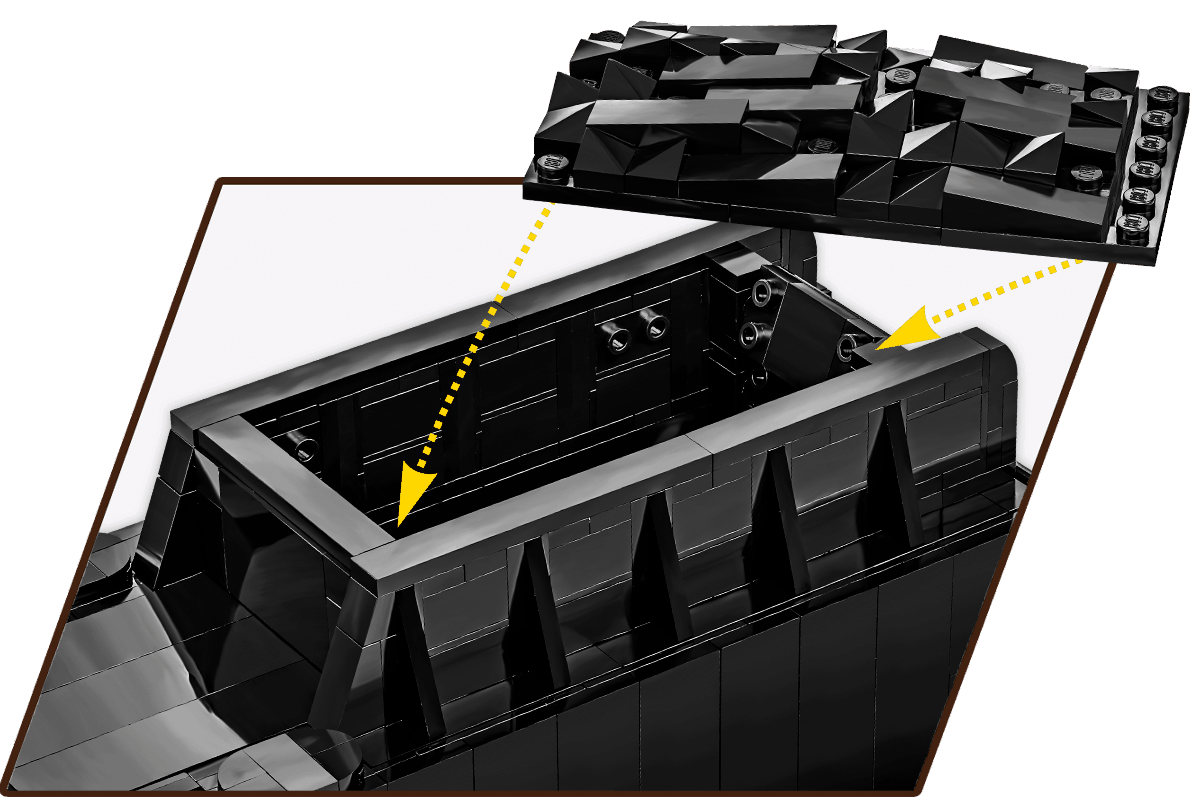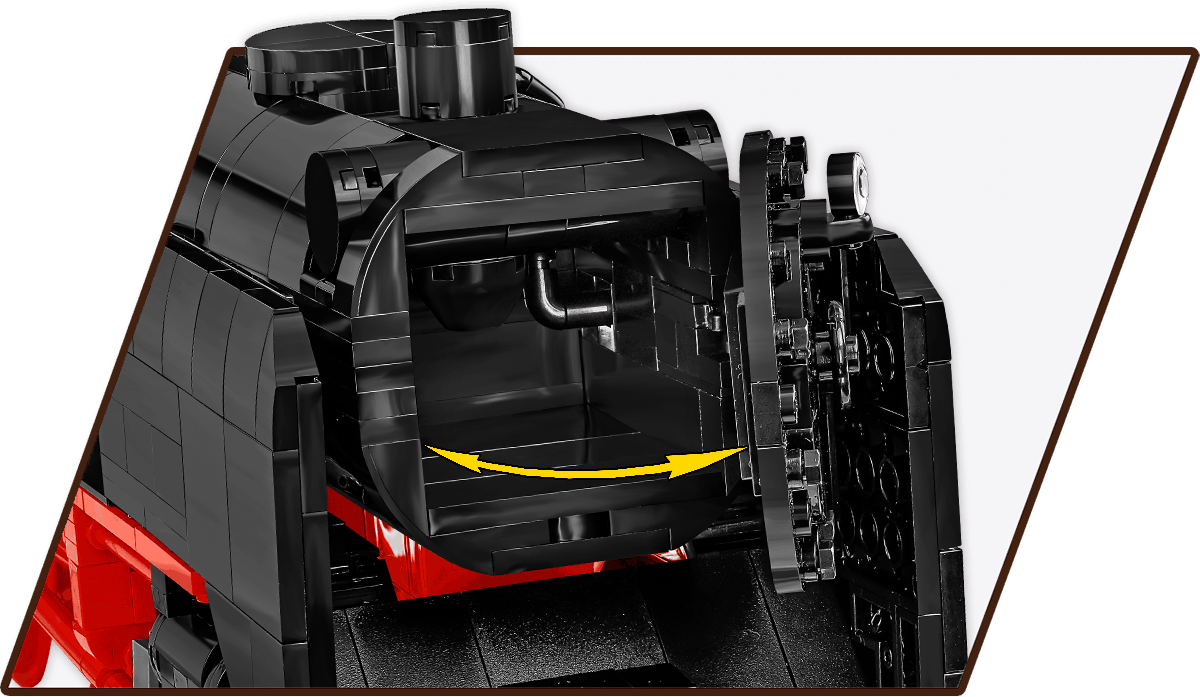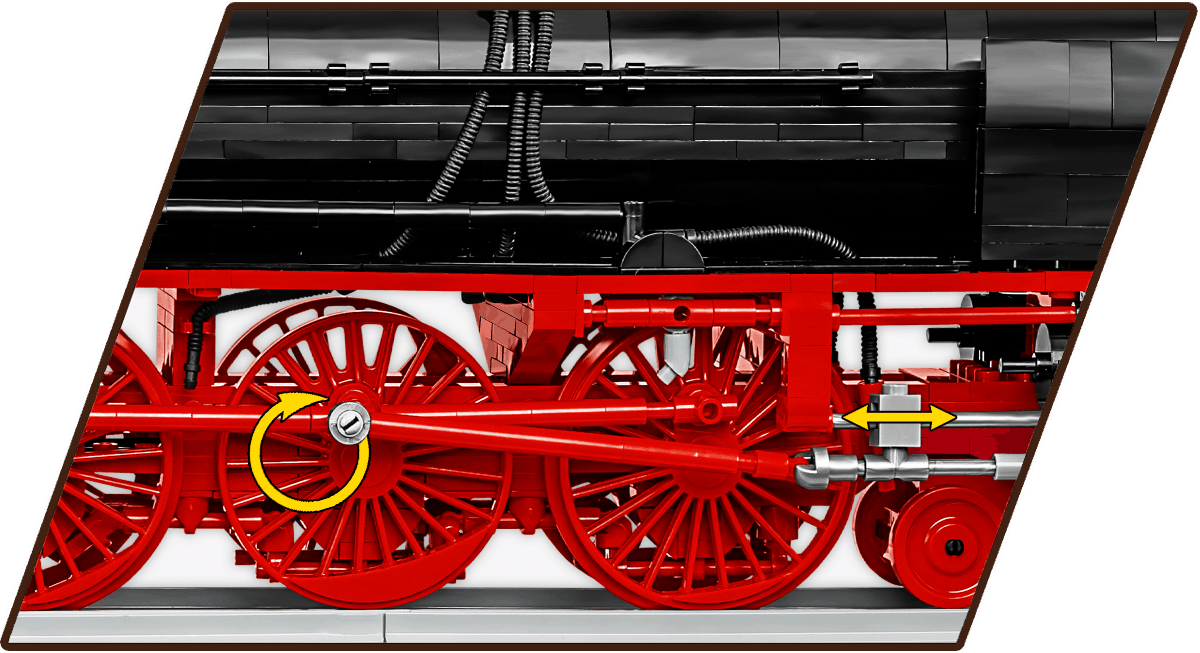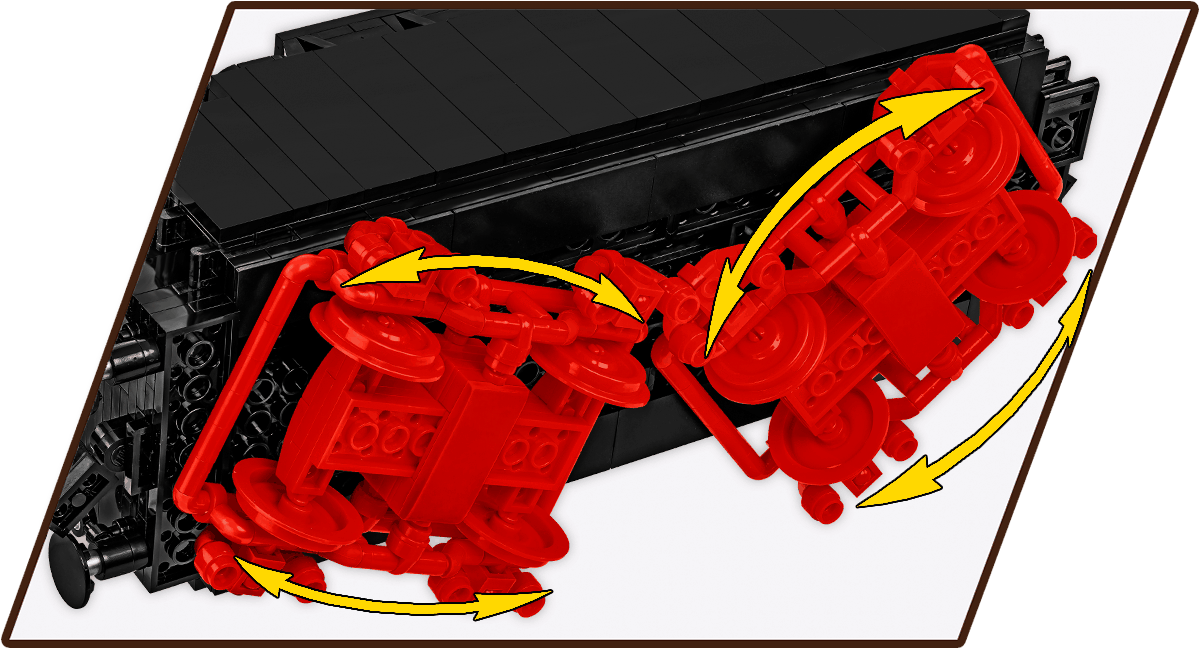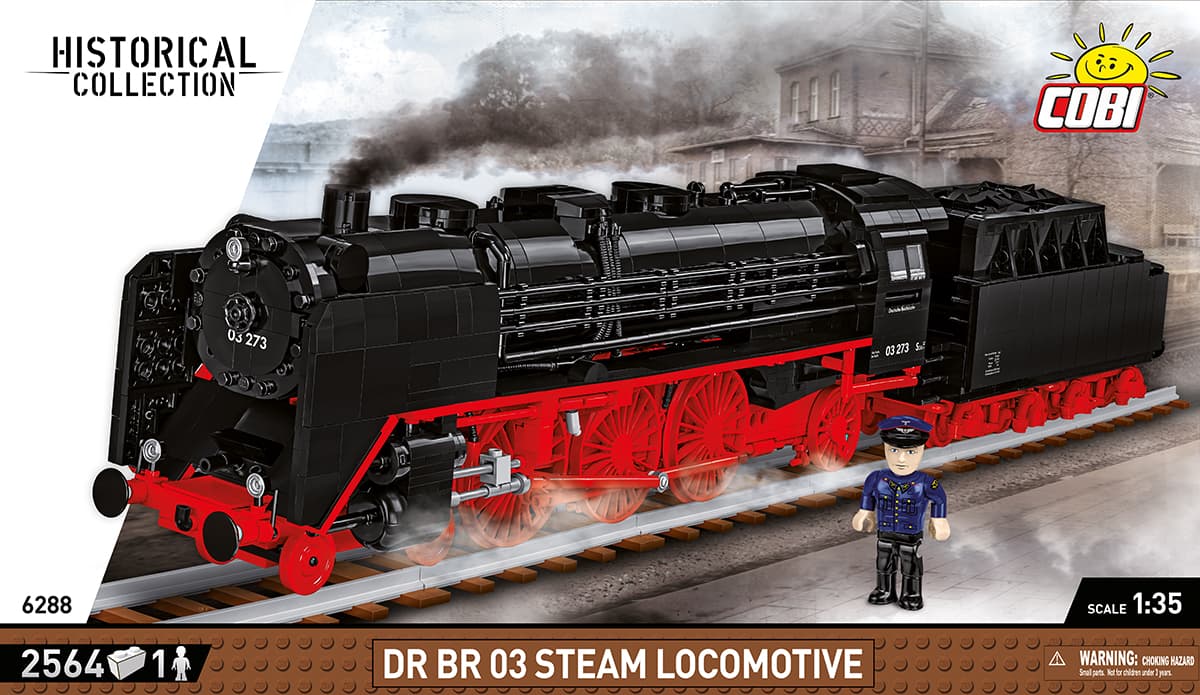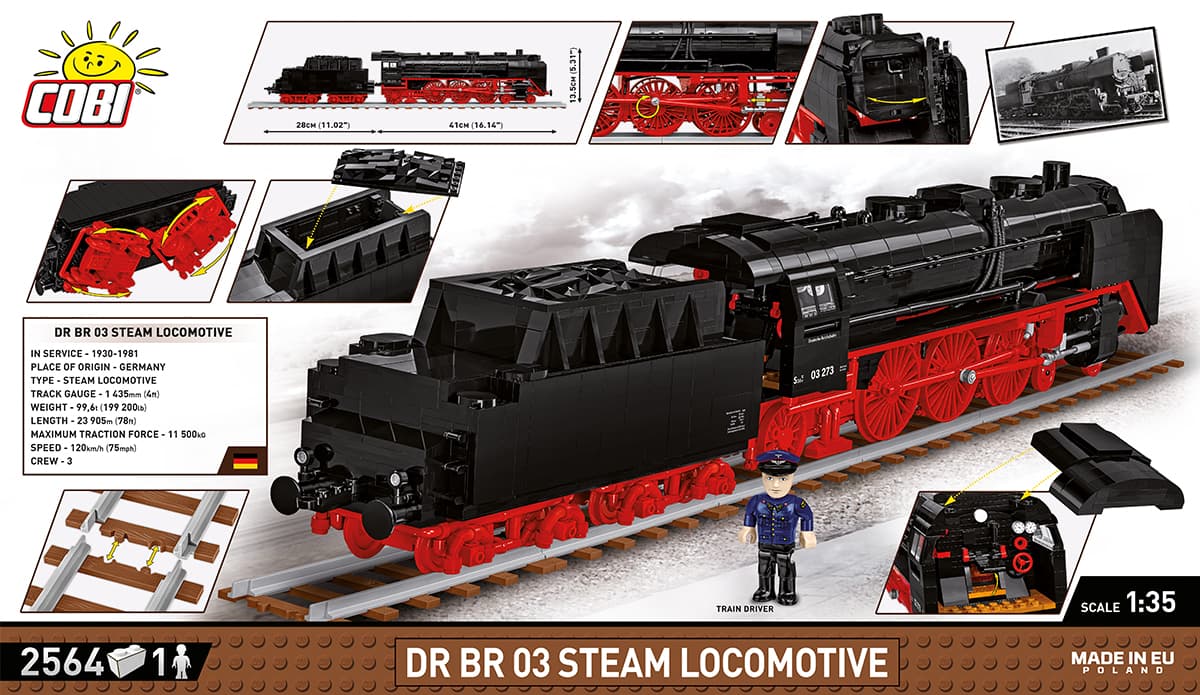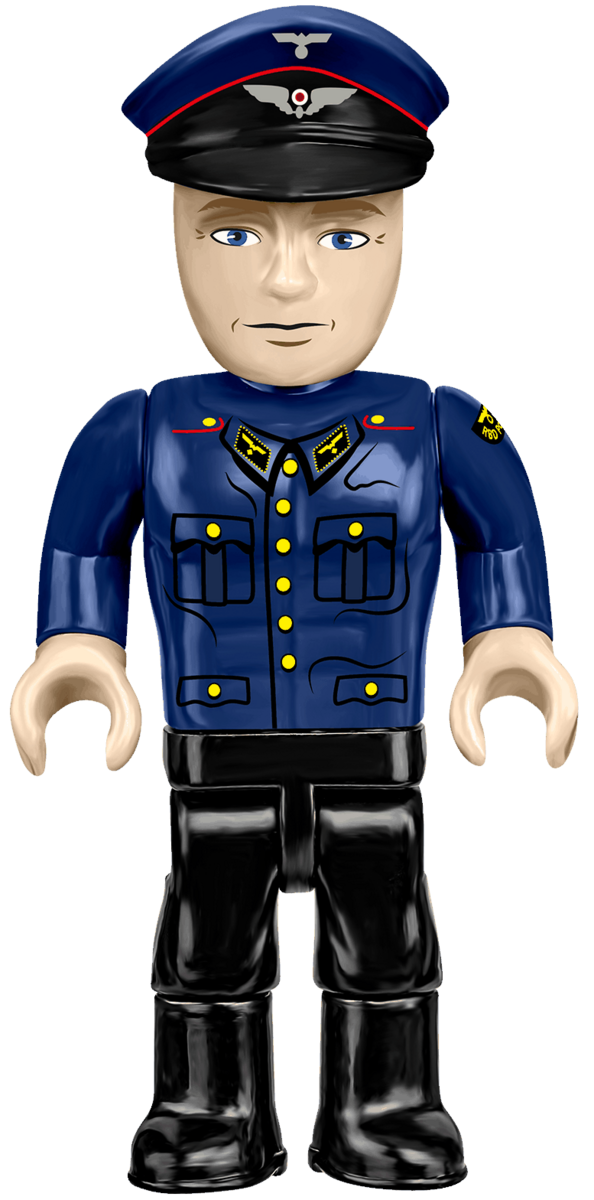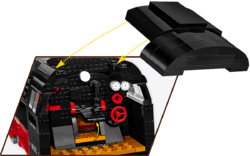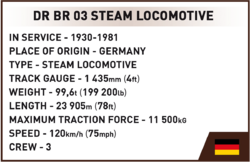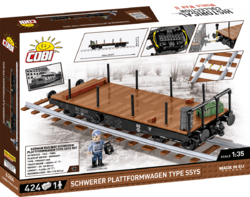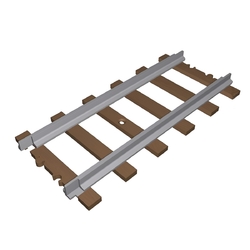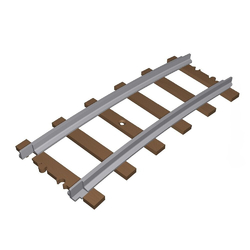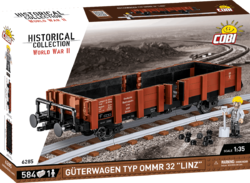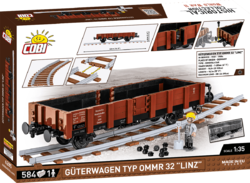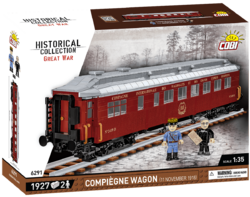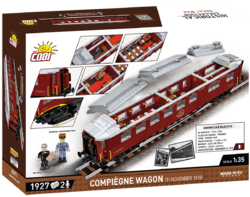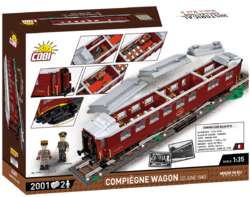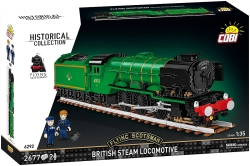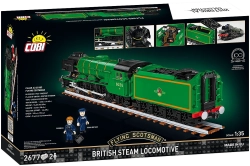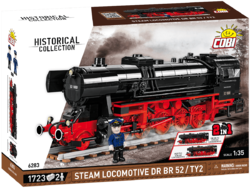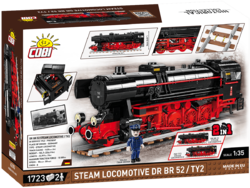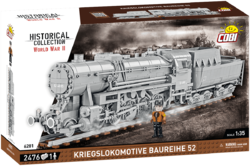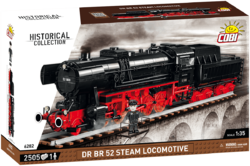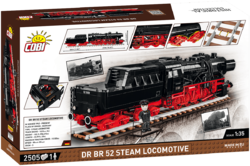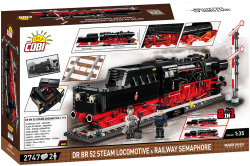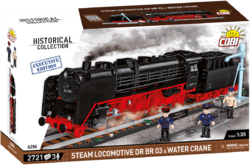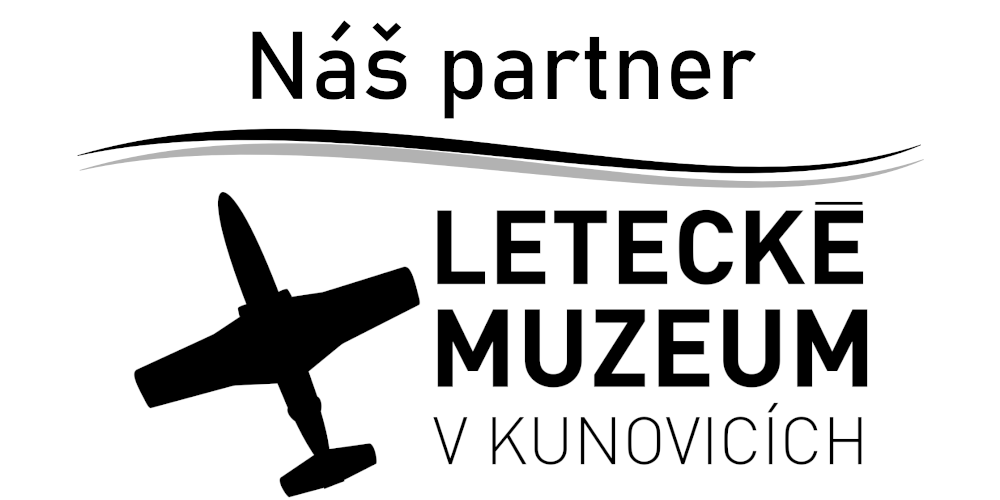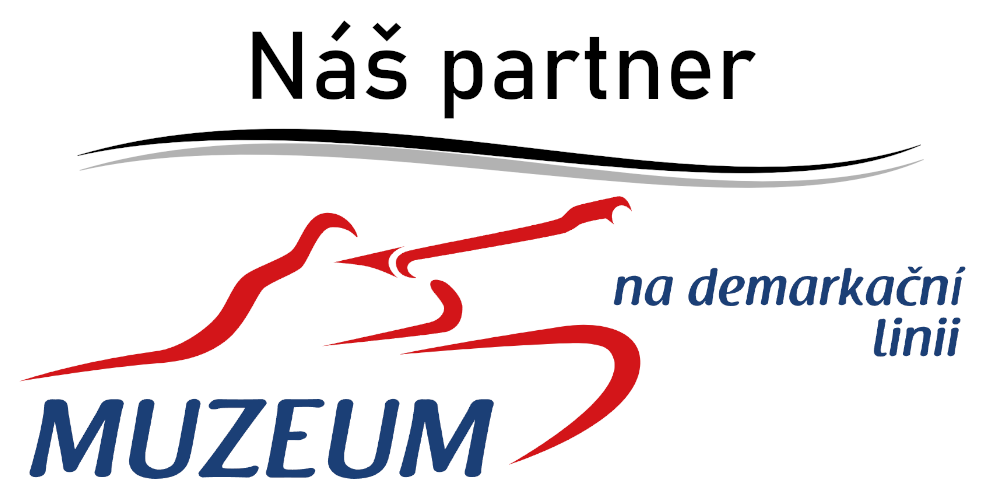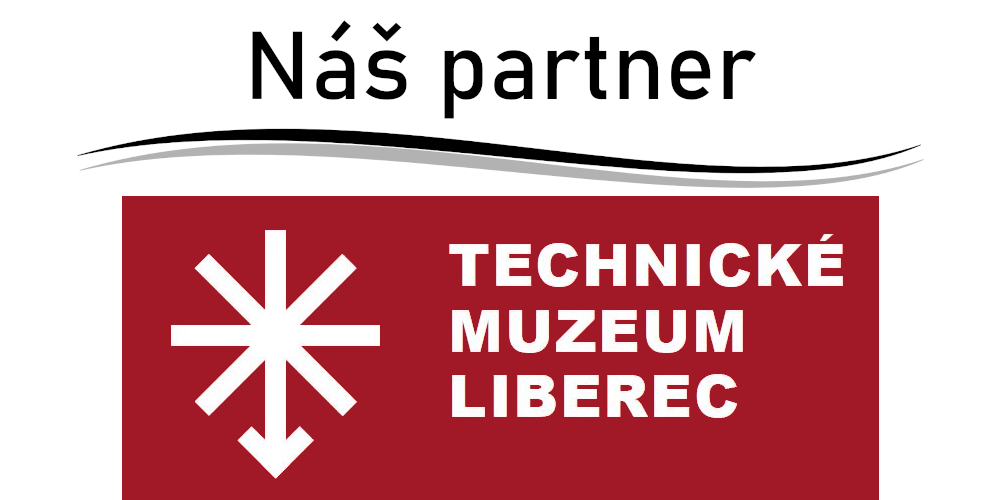Kit of the model of the famous German-built steam locomotive DR BR 03 no.:03273 including the attached train tender. Thanks to the removable roof, it is possible to look into the equipped engine room. A beautiful detail are the parts imitating fire in the locomotive's furnace. The wheels of the model are coupled and contain several gears. When driving, everything moves. The package also includes five segments of a realistic-looking track with sleepers in wooden decor with a total length of 69 cm. The track segments have holes for possible mounting to the base of the railway diorama. Also included is a figure of a German train driver in uniform. The model is fully compatible with the rail system of other kits and handles the curvature of the R88. The model is equipped with drawbars, so it is possible to connect other cars to the locomotive.
Show more
0 %
(0 Ranking)
4 179 Kč
pcs
Add to Cart
In stock - ready to ship (2 pcs)
| List Number: | COBI-6288 |
| EAN: | 5902251062880 |
| Warranty: | 24 months |
| Manufacturer: | COBI |
| Loyalty Points: | 30 |
| Price excluding VAT: | 3 453,32 Kč |
Description
Parametres
Files and Links
Discussion
Reviews

Did you know: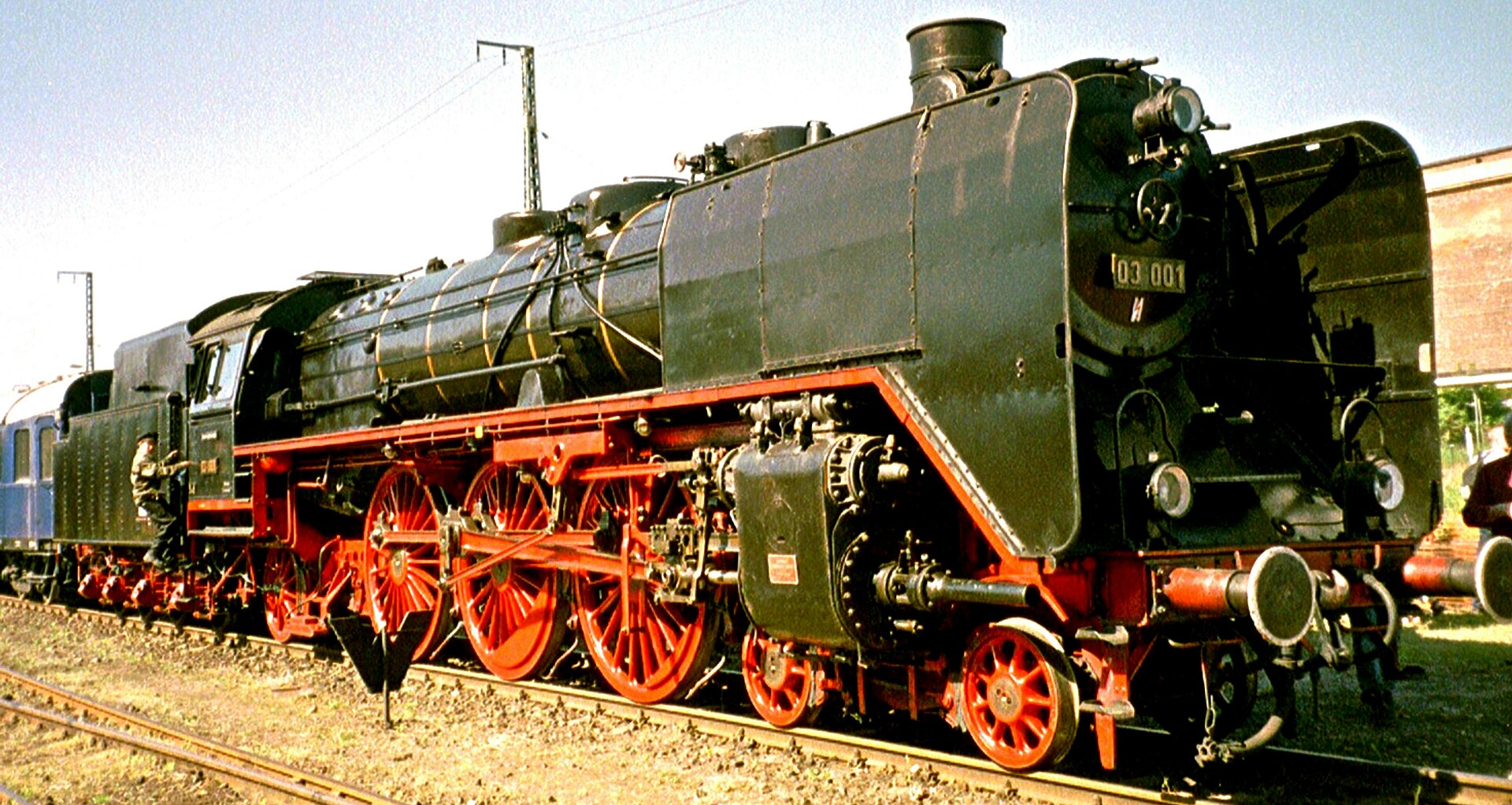
- The construction basis of the BR 03 locomotive derives from the original Prussian T 20 model developed as early as 1920.
- The first locomotives were intended for service on the steep Halberstadt–Blankenburg line. To prevent loss of adhesion and reduced brake effectiveness when descending fully loaded trains, the locomotive is equipped with the so-called Riggenbach counter-pressure brake.
- A proven design locomotive with a bar frame and box boiler driving the third coupled axle, it was the most powerful tank locomotive of its time.
- The German State Railways (DRB) operated over 200 units from 1922 onwards.
- During the German wartime operations, fully loaded trains hauled by the BR 03 were sent to the Eastern Front. Some units were painted grey for camouflage in the snowy Russian landscape.
- Interestingly, some locomotives were experimentally fitted with aerodynamic cladding, which was not used in regular service.
- The unit numbered 03 273 was built as a lightened variant for lines with lower load limits. Its first trial run took place on February 6, 1937, on the Wuppertal–Langerfeld route.
- After World War II and the formation of the GDR, 24 units remained under Soviet administration, of which about 10 were converted to oil firing.
- The last unit was withdrawn from service in 1981. However, one locomotive continued to serve for several years as a heating engine for the repair workshops in Kamenz.
Technical specifications of the locomotive: 
- Dimensions: length 23.9 m, height 4.4 m, gauge 1435 mm
- Weight: 99 600 kg
- Grate area: 193.7 m²
- Steam machinery output: 1 192 kW at 16 bar steam pressure
- Maximum speed: 120 km/h
- Tractive effort: 11 500 kgf
- Maximum train weight: 635 000 kg
- Crew: 3
Technical specifications of the tender:
- Length: 11.1 m
- Total weight: 70 000 kg
- Water capacity: 32 m³
- Coal capacity: 11–22 t (depending on type)
- Maximum permitted speed: 120 km/h
From the memoirs of August Borsig – founder of the Borsig company:
“When you entered the production hall, it was a world full of smoke, hammering sounds, and the roar of machines. It felt like standing on the threshold of a new world, where every piece of metal and every puff of steam from the locomotive represented a piece of innovation and progress. In those hectic days there was much unknown, but also a tremendous desire to change the face of transportation as people knew it then.”
Assembly instructions
| Number of figurines | 1 pcs |
|---|---|
| Scale | 1 : 35 |
| Recommended age | 10+ |
| Version (series) | 11/2024 |
| Number of pieces | 2564 pcs |
| Package weight | 2880 g |
| Box dimensions | 55 x 32 x 12 cm |
| Dimensions after assembly | 69 x 10 x 13,5 cm |
| Collection | Historie |
| Contains luminous blocks | No |
| Material | Plastic |
| Compatible with other brand of kits | Yes |
Discussion is empty.
There is no review for product yet









